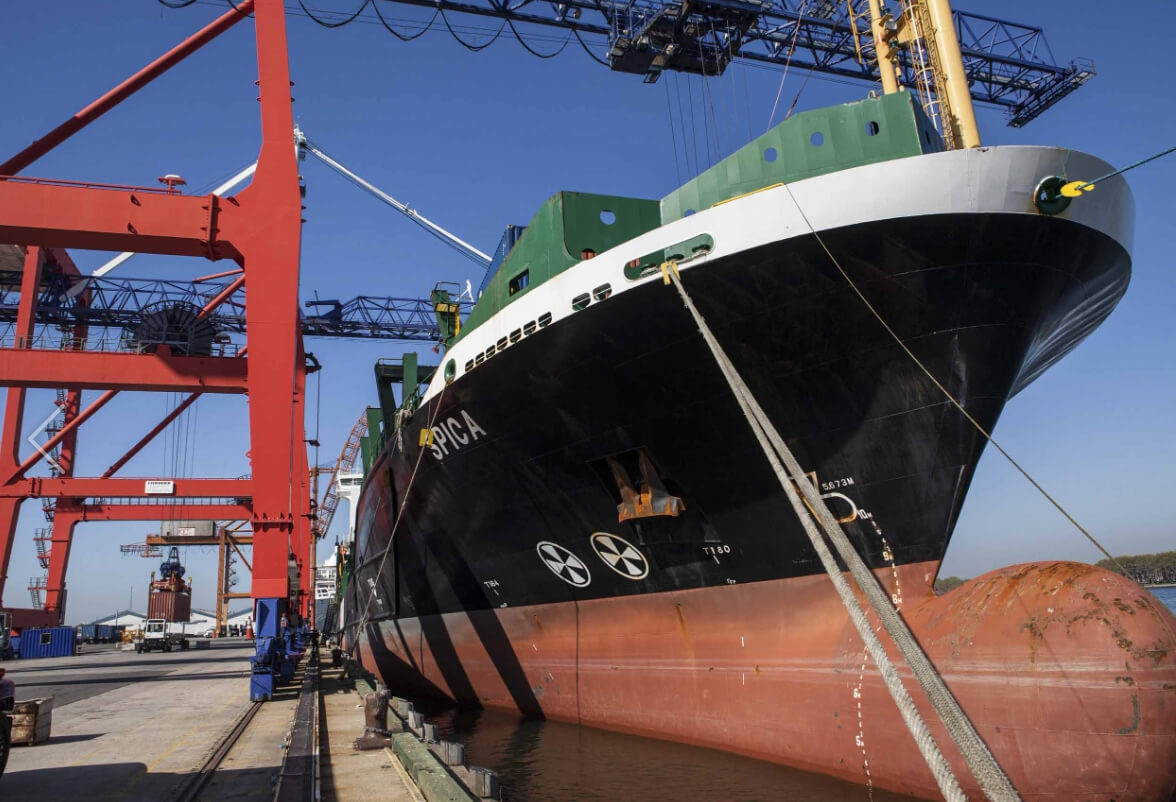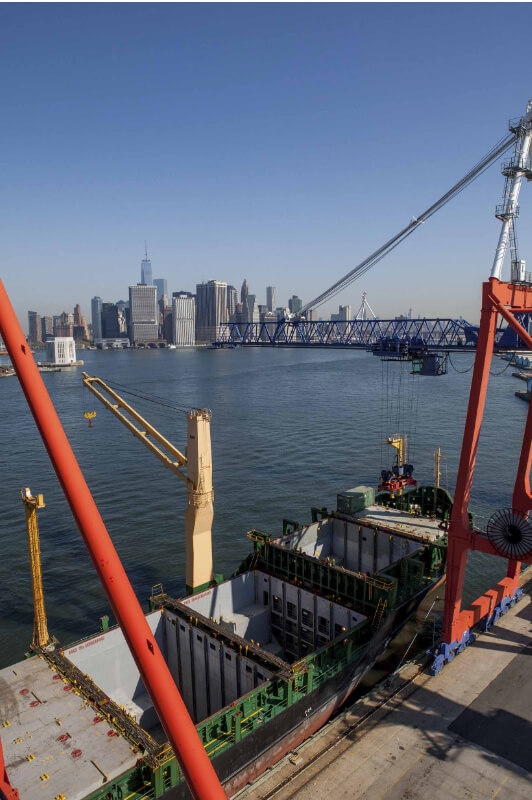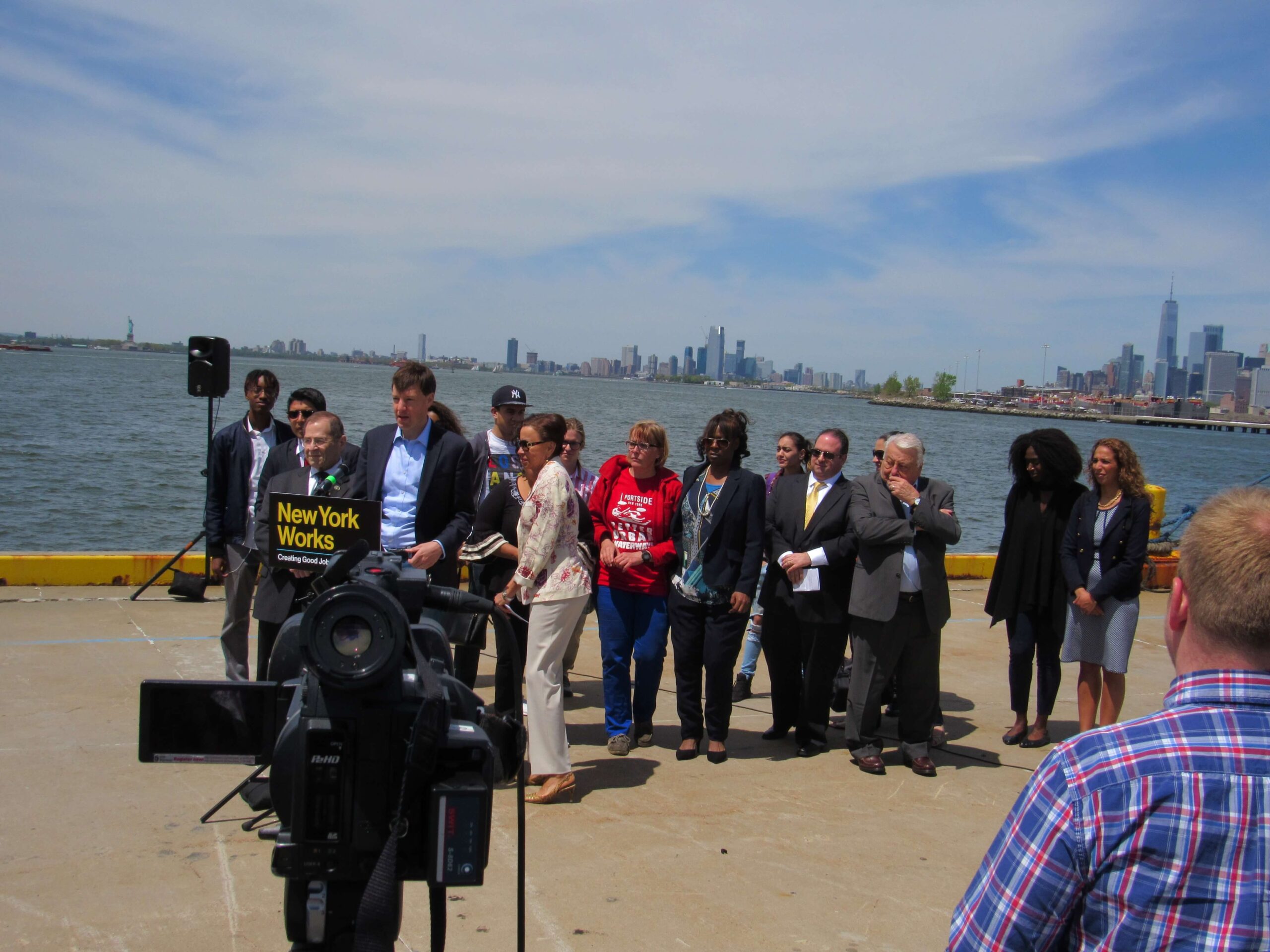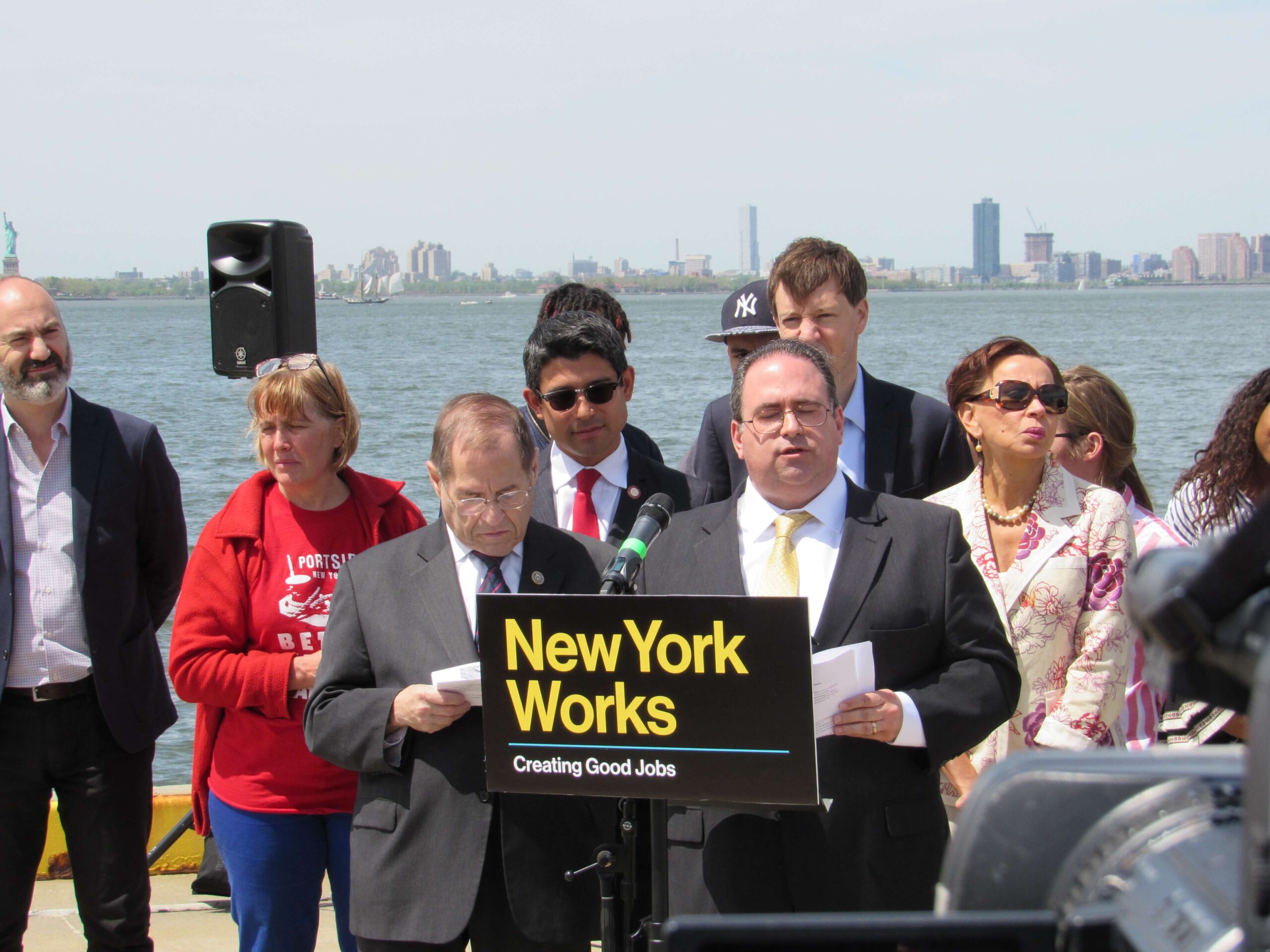Since our first issue, exactly 14 years ago this month, the Star-Revue has been actively reporting on the waterfront. A special report in our September 2010 edition described the Columbia Street piers.
“Piers 8, 9a, 9b and 10 is home to perhaps the most traditional style of work as it is the site of the Brooklyn Container Port. Technically speaking, the site is owned by New York City and leased to the Port Authority by the NYCEDC with the Port Authority privately leasing the container terminal to American Stevedoring. Despite seemingly like a middle-man, the Port Authority plays a very active role in maintenance and upkeep of their piers. This policy has been adopted by the Port Authority because the organization feels that they have the best experts and the most experience when it comes to dealing with maintenance and upkeep of the piers they control, preserving the city-owned property for future leasing opportunities.
The giant cranes used by American Stevedoring for moving cargo containers have become a very familiar site to anyone who regularly walks through the Columbia Waterfront District. The Brooklyn Container Terminal had been one of the more controversial parts of Red Hook just a few years ago as it was one of the city’s prime targets for urban development.
The plan was led by former Deputy Mayor to Michael Boomberg, Dan Doctoroff, and called for the Container Terminal to be relocated to Sunset Park with the former site being turned into a complex of marine-related industry including high-end housing complexes, restaurants, bars, a hotel and shopping centers. American Stevedoring and Community Board 6 had a difference of opinion with what to do with the site and fought against the city’s plan, citing that Red Hook was the best location for the container port because of its deep-water docks. The move to Sunset Park would have required American Stevedoring to dredge the docks, making them accessible for barges. This situation would have a direct influence on the community as the containers would now have to travel to New Jersey by truck, putting an incredible number of trucks on the road. The two sides reached an agreement and American Stevedoring signed a 10-year lease in April, 2008. Although the site is safe for now, it is sure that the issue of what to do with the Brooklyn Container Terminal will come up again once the end of the lease draws near.”
As predicted, the lease renewal was contentious and the Port Authority reluctantly granted only a five year renewal following political pressure not to shut the facility down. The year before, the conservative Manhattan Institute published a report recommending the Port Authority sell the money-losing facility, but in 2020 the PA published “Port Master Plan 2050” which included the following:
PHASE I
The Port Authority will continue to evaluate alternatives to maintain and grow East-of-Hudson marine cargo operations together with its partners at New York City Economic Development Corporation (NYCEDC) and Empire State Development (ESD).
Discussions and actions arising from the ongoing study of these alternatives will depend on timing, as well as the successful partnering and collaboration among numerous public and private stakeholders such as the City and the State of New York, shippers, labor groups, local planning boards, logistics service providers and host communities.
The continuation and growth of marine cargo activity at the Brooklyn Port Authority Marine Terminal (BPAMT) in Red Hook will require additional investment in infrastructure improvements and an exploration of ways to improve the facility’s capacity on a constrained footprint with no intermodal rail connectivity.
Development at SBMT could enable the establishment of a state-of-the-art marine facility with potential opportunities for phased expansion to meet the needs of the East-of-Hudson market anticipated during the later years of the PMP timeframe. This facility would also provide linkages to rail and increased cross harbor freight activity.
But then the pandemic hit, and everything ground to a stop. Instead of investing in the Red Hook waterfront, The Port Authority allowed the piers to deteriorate, leading to the recent condemnation of two of the piers. The terminal, run since 2011 by Michael Stamatis, once again was given, seemingly reluctantly, just a five year lease extension earlier this year.
Stamatis claims that in order to get private investment to replace the maintenance that the Port Authority is required to do but hasn’t, he needs at least a thirty year lease.
The City
Mayor Adams was involved in the 2018 lease renewal in his role as Borough President, and has remained aware of the Red Hook shipping operations via appearances he’s made at the Cruise Terminal announcing new cruises. Two years ago he surprised Alexa Aviles and the entire Red Hook community as he blew through the neighborhood to declare an expansion of cruise ship activity here.
Perhaps incited by this slight, Aviles pushed a shore power bill through the City Council in an attempt to force green standards on the expanded cruise ship operation.
In early 2023, Adams temporarily converted the Cruise Terminal into a migrant shelter, as he was dealing with the influx from Texas and other parts.
Probably the reason for the latest renewal is that the PA was already in discussion about the new plan announced last month (see page 7 in this issue).
The new “reimagined” Brooklyn Marine Terminal draws on the 2020 Master Plan, but the Port Authority has bailed on it, trading their ownership of the Brooklyn waterfront with the city’s Howland Hook property. The new plan has been highly touted by all our local politicians as well as the EDC. They claim that a new Master Plan, to be developed by a Task Force composed of local stakeholders, will guarantee a bustling local maritime business, less trucks on the road, and solutions to the local street traffic situation.
Stamatis says that in the whole time he has been overseeing the marine operation, he’s had to fight what he calls “the view.” Meaning the lust of real estate developers to use our waterfront for more profitable purposes, namely luxury high rises with priceless views of Manhattan.
Right now the terminal operates on about half of the 120 acres of waterfront. Stamatis says that he will “fight like hell” to not only keep his acreage, but increase it to allow for the expansion of the shipping hub. He concedes that a portion of the land will end up as a mix of residential housing and parks, hopefully at the north end, adjacent to Brooklyn Bridge Park.
Our role in this
It will be both this newspaper’s job, and you, as a community stakeholder, to see that this mix remains. Congressman Jerry Nadler, who until redistricting represented this waterfront, is skeptical of the current plan, which doesn’t guarantee in writing a maritime future. Congressman Goldman and the EDC disagrees and says it’s a no-brainer.
Author
-
Founder and editor of the Red Hook Star-Revue. George is also a musician and one-time progressive rock disk jockey, in York, Pennsylvania, also birthplace of Mrs. Don Imus.
View all posts
Founder and editor of the Red Hook Star-Revue. George is also a musician and one-time progressive rock disk jockey, in York, Pennsylvania, also birthplace of Mrs. Don Imus.













2 Comments
There is a massive type-o in the title of this article.
Yes, I did fix it in the paper, but forgot to here. Taking care of it now…